Introducing Reality Modeling and AI-Powered Analysis Services with Cesium ion
At the 2025 Cesium Developer Conference, we were thrilled to demonstrate two powerful new Cesium ion capabilities now available to all users as a tech preview: reconstructing 3D reality models from photos and running AI-powered reality analysis. Both are essential toward Cesium’s mission to empower the community to build 3D geospatial experiences at the convergence of the built and natural environment.
With Cesium ion’s 3D modeling from photos, ion users can create 3D Tiles reality models, ready to stream to applications.
Tens of thousands of users already upload reality data to Cesium ion, and for years they’ve asked us to make reality modeling tools available directly in ion. We’ve done it! With ion’s 3D modeling from photos, you can create 3D Tiles reality models, ready to stream to applications. The day after we demoed at the conference, users were already showing us 3D models they’d produced from photos with ion and told us how much this capability will streamline their workflows.
Users frequently also request classification tools for their data in Cesium ion. Now, running Cesium ion’s curated analysis detectors against reality data, including previously uploaded reality data, produces a new point cloud segmented into the regions the detector is trained to identify, such as trees, railroad components, or buildings. This 3D Tiles point cloud can be styled to aid visualization or used by software for automated decision-making, providing actionable, real-world insights for city planning, environmental monitoring, transportation assessments, and other vital use cases.
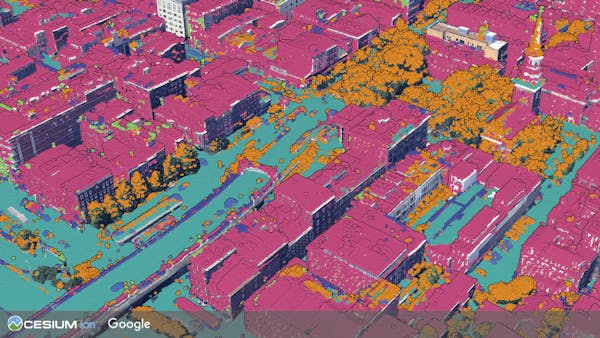
A point cloud of Philadelphia’s Old City neighborhood after analysis with Cesium ion’s city detector. Source point cloud used for analysis provided by PASDA and combined with Google Photorealistic 3D Tiles.
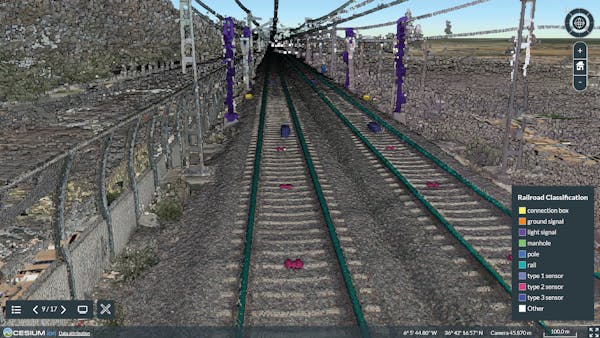
A point cloud of a section of railroad after analysis with Cesium ion’s railroad detector.
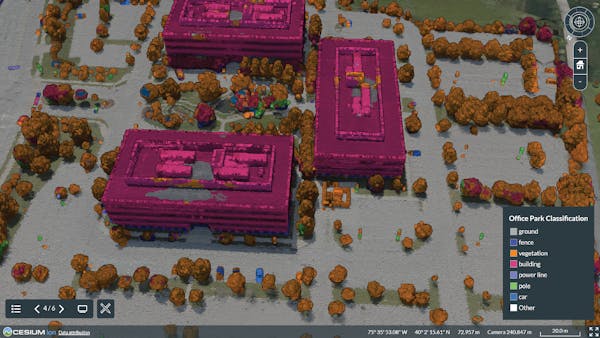
A point cloud of an office building and the surrounding area after analysis with Cesium ion’s city detector.
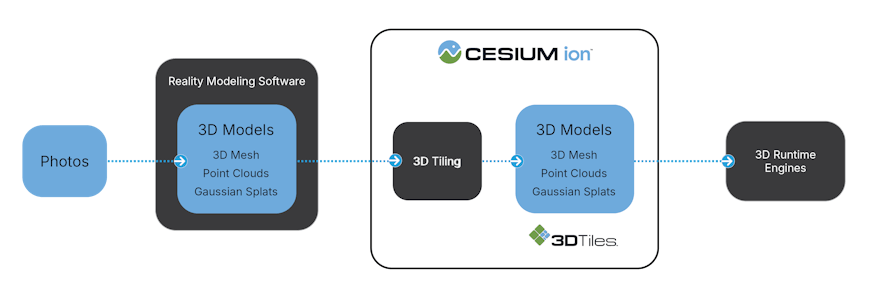
Uploading existing 3D reality data to Cesium ion.
Of course, you can still import 3D models created outside Cesium ion, but with ion’s new reconstruction capabilities, you can now upload photos directly, and ion will generate the 3D models automatically—a more efficient and faster workflow. All photo uploads produce a 3D Tiles mesh. Optionally, you can also generate a 3D Tileset as a point cloud and Gaussian splats using the 3D Tiles draft extension. And of course, using Cesium ion, you can easily combine your 3D reality data with global 3D content like Cesium World Terrain or Google Photorealistic 3D Tiles, and with 3D design models, creating a unified view of the built and natural environment.
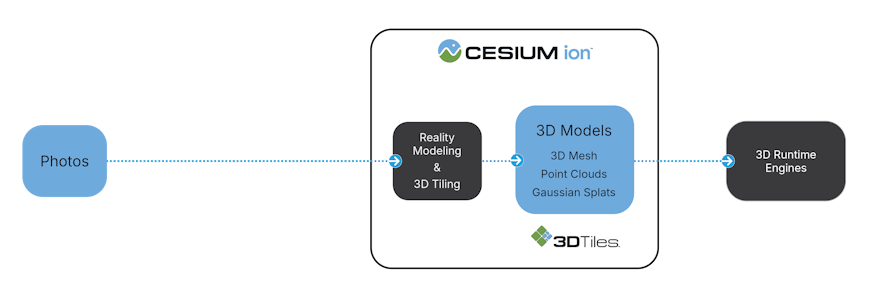
Uploading photos to Cesium ion using the new reality modeling feature.
To bring you this state-of-the-art modeling quality, we integrated Cesium ion with technology from Bentley Systems iTwin Capture. Bringing this technology to the Cesium community is one of the key benefits of Cesium becoming part of Bentley, and we are excited to achieve this milestone release. iTwin Capture modeling technology is already used in production across the world, in applications such as mining, construction, and cell tower maintenance. For example, SMEC used iTwin Capture to create a digital twin of the N4 Montrose Interchange project in South Africa, saving money and time while protecting the sensitive surrounding environment. Our team is proud to make iTwin Capture technology available to Cesium’s broader ecosystem, where reality data is essential to domains as wide ranging as climate research, real estate development, flight simulation, sports broadcasting, and reality-based gaming.
"Being able to generate photogrammetry, point clouds, and 3D Gaussian splats 3D Tiles from drone imagery input, stream them seamlessly to the web, and analyze the point clouds is a major milestone. This release brings end-to-end 3D reality modeling into one accessible, high-performance pipeline,” said Osarodion Victory Igbinobaro, co-founder and CEO of AERO AI.
In future updates, look for modeling enhancements to help you tune how photo reconstruction is performed to produce exactly the results you need. We’re also considering the best way to make modeling available with Cesium ion Self-Hosted to enable these efficient workflows in your own environment. Share your thoughts with us on the community forum.
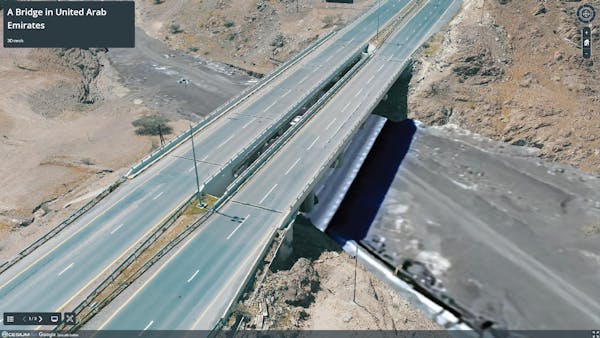
A 3D mesh tileset of a bridge reconstructed by Cesium ion from 141 photos.
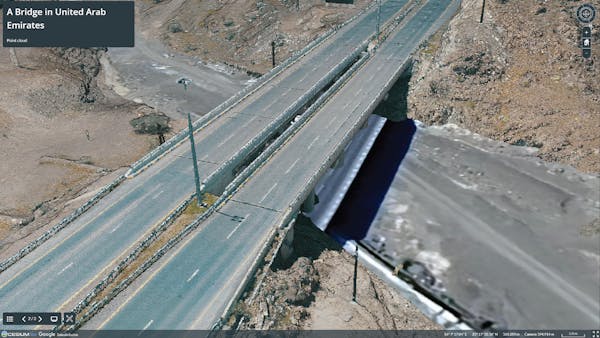
A point cloud tileset of a bridge reconstructed by Cesium ion from 141 photos.
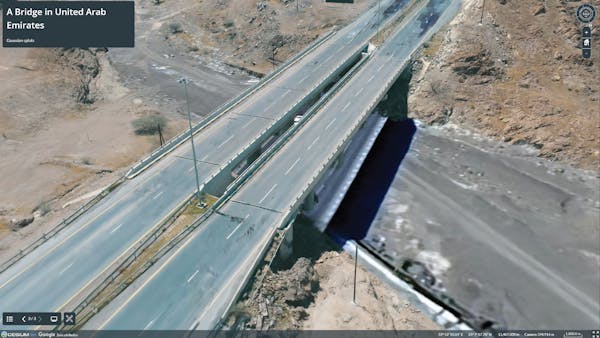
A Gaussian splats tileset using 3D Tiles draft extension of a bridge reconstructed by Cesium ion from 141 photos.
Reality analysis
The Bentley technology that provides us with modeling services also includes AI-powered reality analysis to identify objects, regions of interest, and defects in reality data. With this first step to integrate reality analysis into Cesium ion, you can apply 3D segmentation to point clouds to produce a new, segmented 3D Tiles point cloud with embedded metadata. The metadata allows for runtime querying, styling, and filtering, like the styling seen in the Cesium Story below. The result is real-world insight into reality data, supporting data-driven decisions for urban planning, ecological monitoring, asset inventory, and more.

The 3D reality data analysis flow in Cesium ion.
In the coming year, we will bring more of Cesium ion’s reality analysis roadmap to you. This will include tools to build custom reality analysis detectors tuned for your data and the ability to extract features from reality data as supplemental vector data that can be used for overlays, annotations, and styling.
Applying 3D segmentation to 3D reality data to produce a new, segmented 3D Tiles point cloud with embedded metadata.
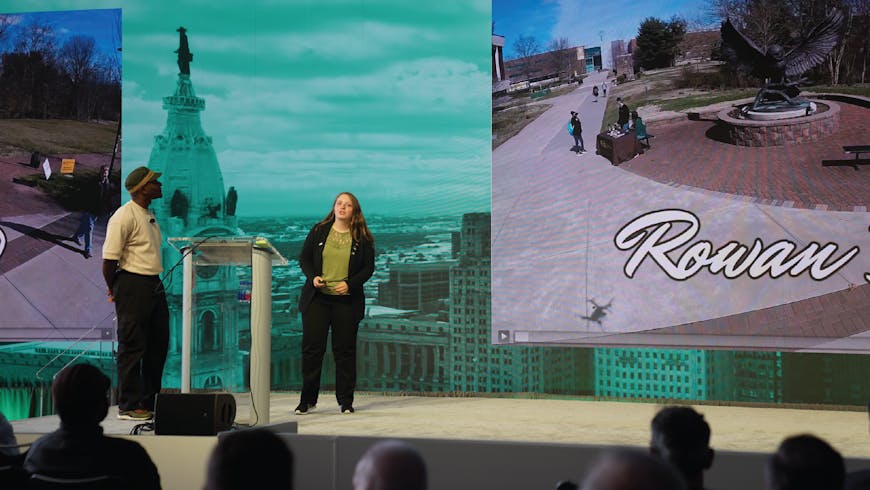
Osarodion Victory Igbinobaro of AERO AI (left) and Mary Moor of Rowan University (right) highlighted their experimentation with Cesium ion reality modeling at the Cesium Developer Conference. Have a project to share? Tag @Cesium when you share your projects on LinkedIn.